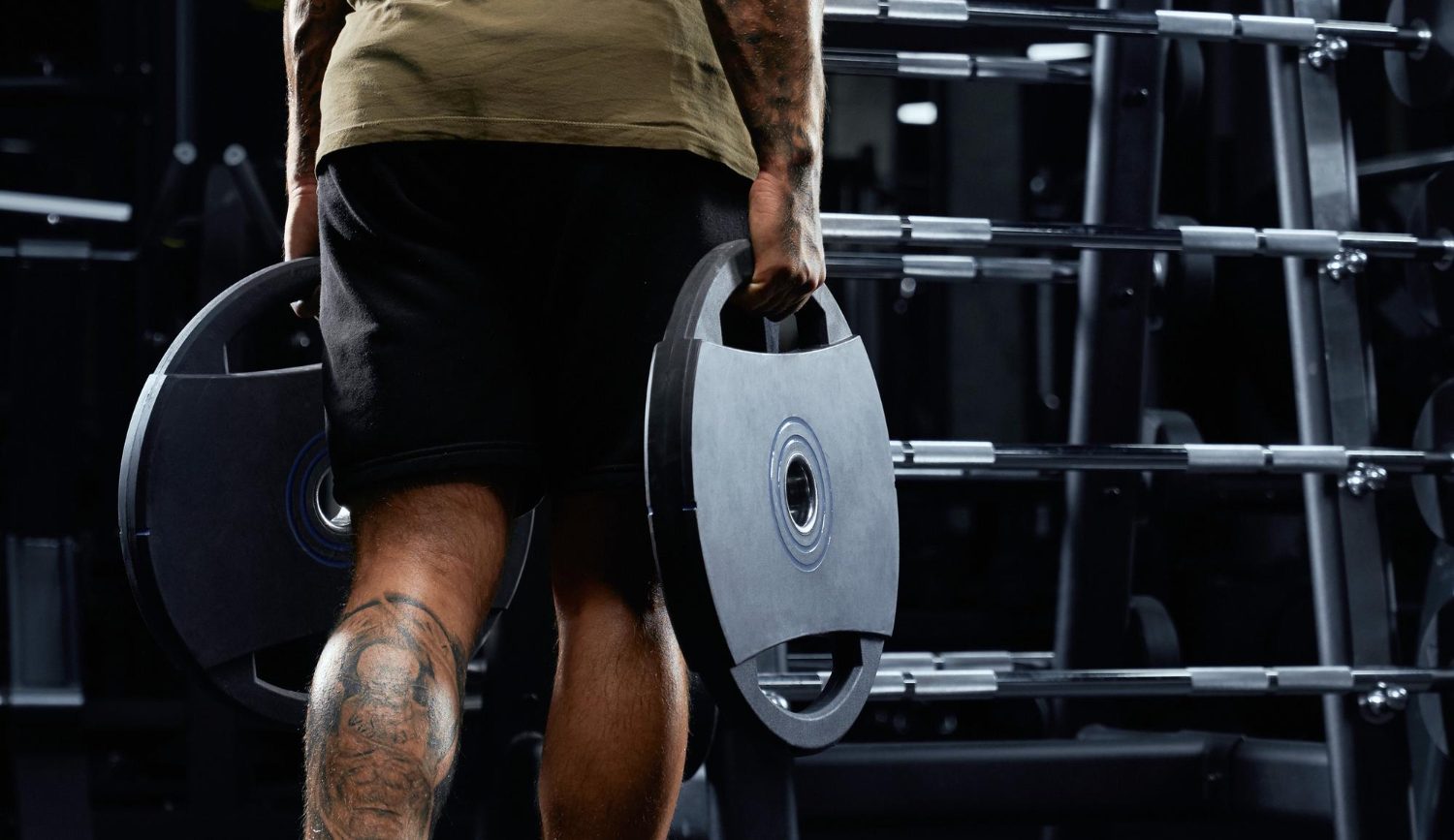Eccentric training, commonly referred to as “negatives,” is a highly effective yet often overlooked method in hypertrophy training. This training technique focuses on the eccentric phase of muscle contraction, where the muscle lengthens under tension. Understanding and incorporating eccentric training can significantly enhance muscle strength, hypertrophy, and overall athletic performance.
What is Eccentric Training?
Eccentric training involves emphasising the negative phase of an exercise. In any movement, muscles undergo three types of contractions: concentric (muscle shortening), isometric (muscle holding at a fixed length), and eccentric (muscle lengthening). For instance, when performing a bicep curl, lifting the weight is the concentric phase, holding the weight at the top is the isometric phase, and lowering the weight is the eccentric phase. Eccentric training focuses on controlling and extending the time spent in the negative phase of the movement.
Benefits of Eccentric Training
1. Increased Muscle Strength
Eccentric contractions can produce more force than concentric contractions. On average, you can lift about 20% more weight during the eccentric phase compared to the concentric phase. This means you can handle heavier weights during the eccentric phase, leading to greater strength gains.
2. Enhanced Muscle Hypertrophy
Eccentric training induces more muscle damage compared to concentric training, promoting more significant muscle growth during the recovery and rebuilding process.
3. Improved Flexibility
Controlled lengthening of muscles can improve flexibility and reduce the risk of injury by strengthening muscles and connective tissues.
4. Boosted Metabolic Rate
Eccentric training requires more energy and increases post-exercise oxygen consumption, aiding in fat loss and boosting overall metabolic rate.
The Science Behind Eccentric Contractions
Eccentric contractions generate more force with less energy expenditure compared to concentric contractions. This is due to the unique mechanical and physiological properties of muscle fibres and connective tissues. During eccentric movements, muscles can bear more load because they are resisting rather than actively lifting weight. This resistance causes micro-tears in muscle fibres, leading to muscle hypertrophy when the fibres repair and grow back stronger.
Eccentric training also stimulates the nervous system more effectively, improving neuromuscular efficiency. This leads to better motor unit recruitment, enhancing overall muscle strength and coordination.
Examples of Negative Exercises You Can Do Alone
1. Negative Pull-Ups
Pull-ups are an excellent compound exercise for upper body strength. To perform negative pull-ups:
- Use a step or jump to get your chin above the bar.
- Slowly lower yourself down to a full hang over a count of 5-10 seconds.
- Repeat for 3-5 reps and aim for 3-4 sets.
- Rest for 1-2 minutes between sets.
2. Negative Push-Ups
Push-ups are a fundamental exercise for chest, shoulders, and triceps. For negative push-ups:
- Start in the plank position with arms extended.
- Slowly lower your body to the ground over a count of 5-10 seconds.
- Push up quickly to return to the starting position.
- Perform 3-4 sets of 6-8 reps with a 1-minute rest between sets.
3. Negative Bicep Curls
Bicep curls can be performed with one arm assisting the other. To perform negative bicep curls:
- Stand with a dumbbell in one hand.
- Use your free hand to help lift the weight to shoulder height quickly.
- Remove your assisting hand and slowly lower the weight back down over 5-10 seconds.
- Repeat for 3-4 sets of 6-8 reps.
- Rest for 1-2 minutes between sets.
Assisted Negative Reps with a Training Partner
A training partner or spotter can be invaluable when pushing past plateaus in eccentric training. By using a free hand or a spotter/partner, you can handle heavier weights than usual during the eccentric phase, while receiving assistance during the concentric phase. This approach allows you to fully exploit your muscle’s potential during the stronger eccentric phase.
1. Bench Press
- Load the bar with a weight you can handle for 1-2 reps.
- With your partner’s help, lift the bar to the starting position.
- Slowly lower the bar to your chest over a count of 5-10 seconds.
- Your partner helps you lift the bar back up.
- Perform 3-4 sets of 3-5 reps with a 2-minute rest between sets.
2. Squats
- Load the bar with a weight you can control for 1-2 reps.
- With your partner’s support, lower into the squat position over 5-10 seconds.
- Your partner assists you back to the starting position.
- Aim for 3-4 sets of 3-5 reps with a 2-minute rest between sets.
Time Under Tension: The Key to Eccentric Training
Time under tension (TUT) is a critical concept in eccentric training. It refers to the total time a muscle is under strain during a set. Increasing TUT, particularly during the eccentric phase, maximises muscle fibre recruitment and growth. For effective eccentric training, the negative phase should be slow and controlled, typically lasting 5-10 seconds. This prolonged tension enhances muscle damage and stimulates greater hypertrophy.
Using Heavier Weights to Push Through Plateaus
Understanding that the eccentric phase is stronger allows you to load up the weight on your lifts more than usual. By using a free hand or a spotter, you can handle heavier weights during the eccentric phase and receive assistance during the concentric phase. This method helps push through plateaus by:
- Loading the weight for the eccentric phase, around 20% more than you can lift concentrically.
- Using a spotter to help with the concentric phase.
- Removing the assistance for the eccentric phase to perform the movement unassisted.
This approach ensures maximum muscle engagement during the eccentric phase, stimulating greater strength and growth.
Additional Considerations
Warm-Up and Cool-Down
Proper warm-up and cool-down are essential to prevent injury and aid recovery. Incorporate dynamic stretches and light cardio before your workout, and static stretching and foam rolling post-workout.
Recovery
Eccentric training can cause significant muscle soreness (DOMS), so adequate recovery is crucial. Ensure proper hydration, nutrition, and sufficient rest between training sessions. Listen to your body and avoid overtraining.
Progressive Overload
Gradually increase the weight or duration of the eccentric phase to continue making progress. Progressive overload is key to continued muscle growth and strength gains.
Form and Technique
Maintaining proper form is vital to avoid injury. Focus on slow, controlled movements and avoid using momentum. If you’re new to eccentric training, start with lighter weights to master the technique before progressing to heavier loads.
Variation
Incorporate a variety of exercises to target different muscle groups and keep your workouts engaging. Eccentric training can be applied to most resistance exercises, so don’t hesitate to experiment and find what works best for you.
Eccentric training, or negatives, is a powerful tool for anyone looking to enhance their strength, muscle mass, and overall fitness. By focusing on the negative phase of muscle contractions, you can maximise muscle damage and stimulate greater growth and strength adaptations. Whether training alone or with a partner, incorporating eccentric exercises into your routine can help you push past plateaus and achieve your fitness goals. Remember to prioritise time under tension, maintain proper form, and ensure adequate recovery to reap the full benefits of this training method. Happy lifting!






